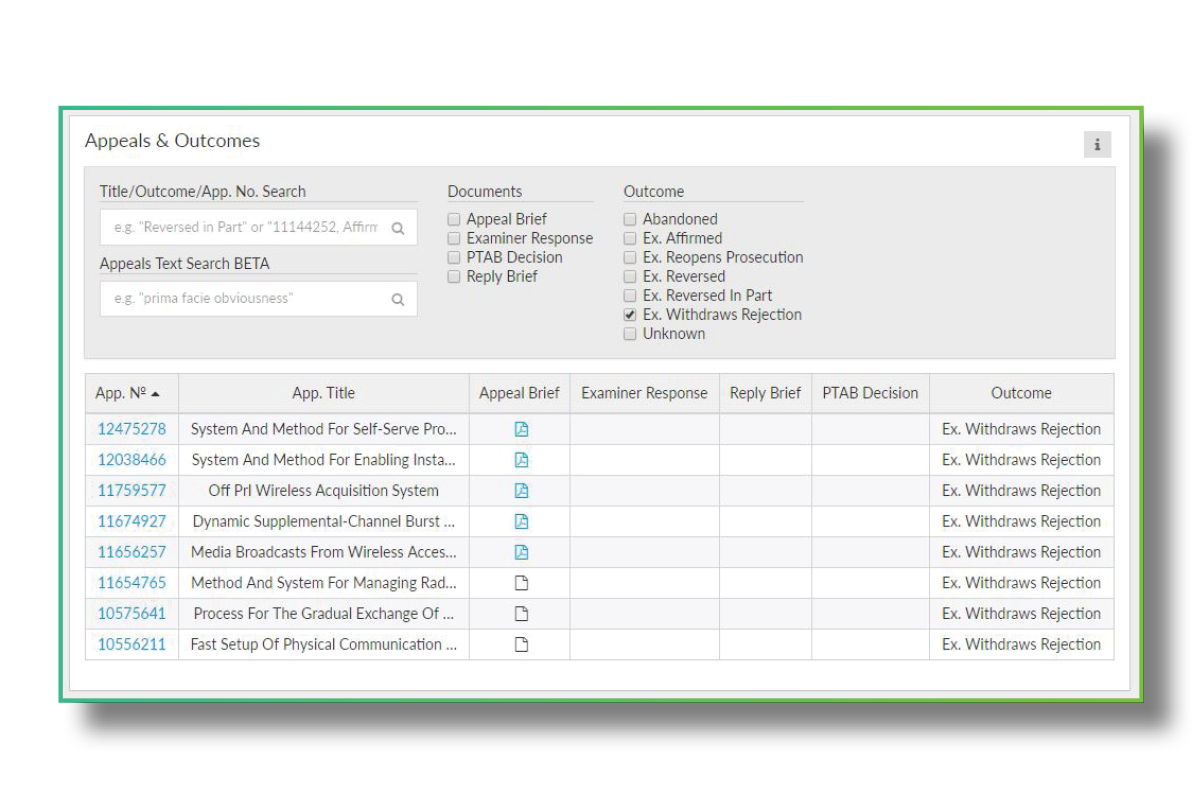Thanks to Juristat examiner analytics, patent practitioners can now leverage data to shape prosecution strategy based on the decision history of an assigned examiner.
Here are three essential (and often overlooked) examiner analytics that can lead to a more strategic prosecution.
Examiners in the same art unit can make very different decisions.
Many attorneys assume past experience with one examiner can guide their strategy with other examiners in that same art unit. We recommend using Examiner Reports to research and compare individual examiners. This way, you can prepare a tailor-made prosecution strategy for a greater chance at allowance.

When it comes to patent prosecution, it’s all in the details.
Juristat’s Table View allows you to conduct detailed application searches by applying filters or searching for keywords to limit an application set. You can limit the search to applications related to your organization and narrow the search further to applications in a certain tech center, art unit, or with a certain number of OAs.
Past appeal outcomes offer key insights.
You can view past applications that prompted a certain decision from an examiner by scrolling down to the Appeals & Outcomes section of one of our Examiner Reports . Check the relevant box and click on any of the blue PDF icons to view the appeal brief within Juristat and see what specific arguments were persuasive for the examiner.

Juristat examiner analytics can help attorneys create detailed prosecution strategies for every examiner at the USPTO. With interactive and customizable reports, the data provides actionable insights that help practitioners specifically tailor an application for the maximum possibility of allowance.
Curious to learn more about examiner analytics? Check out our webinar, "Using Advanced Examiner Analytics in Patent Prosecution." In this 30-minute Juristat Master Class, we share best practices for using examiner data to make smarter, more strategic prosecution decisions.

